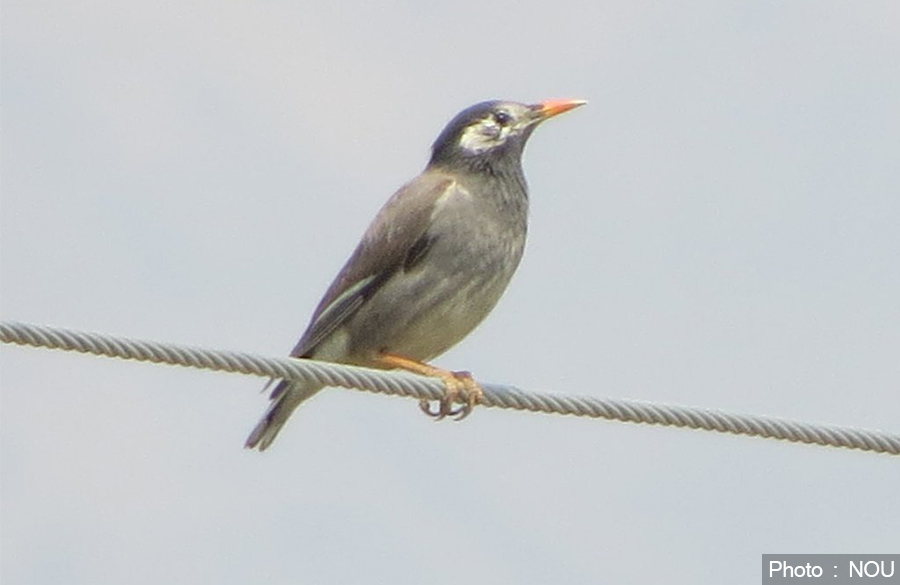
As Nepal undergoes rapid industrialisation and infrastructure expansion, the country’s diverse bird population face an emerging threat from electrocution and power line collisions. This issue is of growing concern among conservationists, who warn that the lives of endangered and vulnerable bird species are at stake.
Nepal is renowned for its rich biodiversity accompanied by diverse landscapes, habitats, climates, wildlife and cultures. Because of this diversity, it has become a home to 915 species of birds including several that are critically endangered species (42) and the endemic species Spiny Babbler.
However, different anthropogenic factors are creating a cause for the increasing bird mortality; power lines being one of the most significant threats.
Hazards for birds

In recent years, Nepal has expanded its electricity grid, with power lines and infrastructure crisscrossing the nation’s landscapes along with the increment in consumers by 7.76 per cent and peak demand by 13.66 per cent.
Nepal Electricity Authority has set a goal to achieve 100 per cent electrification by the next two years and so several hydropower projects are under the development process. While this expansion is essential for economic growth and has improved the quality of life for many, it also has created hazards for birds.
The increase in power lines across landscapes used by birds for migration, nesting, and feeding has led to a rise in electrocution and collisions. Birds that perch on or near power lines are at risk of electrocution when they make inadvertently contact with electrical conductors.
This can result in instant death or severe injury. Collisions occur when birds fly onto power lines, often due to low visibility or distractions. The impact can be fatal or cause significant harm, leading to a slow and painful death.
Raptor mortality due to electrocution
Birds of large size mainly raptors are more prone to electrocution as compared to smaller ones because of their short wingspan. A study by Dr Subedi and his team recorded 54 electrocuted raptors belonging to 8 species. The most affected species were the Himalayan Buzzard, Mountain Hawk-eagle, Bearded Vulture, White-rumped Vulture and Common barn owl. Likewise, Hamal and his team recorded critically endangered White-rumped Vultures along with smaller birds like House Swift, Common Myna, Rock Dove, Blue Whistling-thrush and Crow species as victims of power lines.
A database on admitted raptors in the Wildlife Rescue Center of Kaski also showed that 56 per cent of total cases resulted in raptor mortality, electrocution being the major cause leading by 90 per cent. Raptors are observed nesting and roosting in the electricity pylons and using them as hunting perches in the absence of natural perches making them vulnerable to electrocution. Raptors are the indicators of ecosystem health are now facing threats to their populations by increasing power line incidents.
The mortality of 47 individuals of Sarus Crane resulted from electrocution and collisions in Greater Lumbini Area alone between 2010 and 2023 as recorded by Dr Sharma and his team. The farmlands and wetlands are the primary habitats used by Sarus Crane for roosting and breeding, however, the presence of power lines over these habitats increases the collision risks of the species due to their low flight.
For gregarious species, the danger of electrocution escalates when multiple birds perch on pylons with unsafe designs. This is because they can simultaneously touch different phases or grounded parts of the structure, leading to phase-to-phase or phase-to-ground electrocution, potentially harming more than one bird at once.
The electrocution risk is lower for higher-voltage power structures as phase clearances are wider than the wingspans of birds. However, medium-voltage structures present a much higher risk due to the smaller insulators, specific structure designs, and the shorter distances between electrical phases and the structure itself. The collision risk is higher in bad weather conditions as heavy fog, rain, storms, snow and low light cause less visibility of the surroundings during flight.
Things to do
Multiple approaches may be applied through partnerships involving conservation organisations, governmental bodies, and electricity providers to mitigate bird electrocution and power line accidents in Nepal.
Introducing bird-friendly designs to power line structures, such as insulated wires, safer pole configurations, adequate spacing techniques, and adding perches that guide birds away from dangerous areas can reduce the risk of electrocution.
Marking power lines with bird diverters or reflective materials can increase visibility and reduce collisions. Continued monitoring of bird populations and incidents of electrocution and collisions will help identify high-risk areas and guide conservation efforts.
Community involvement is crucial in addressing this issue. Local communities must be educated about the risks to birds, encouraged to report incidents of electrocution or collision to the relevant Division Forest Office and promote bird-friendly practices.
Power companies may start partnerships with conservation groups to develop and implement bird-safe infrastructure. Government should implement and promote bird-friendly power line construction and maintenance.
By addressing bird electrocution and collision mitigating strategies, Nepal can work toward a future where its avian diversity remains protected, even as it continues to advance its energy infrastructure. As research and conservation efforts continue, the hope is that Nepal’s skies will become safer for its birds, ensuring that future generations can enjoy the vibrant and diverse avian life that is a hallmark of this beautiful nation.






















